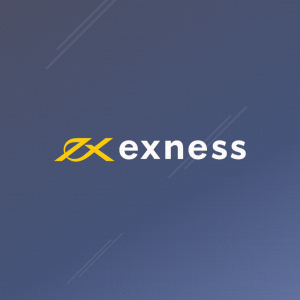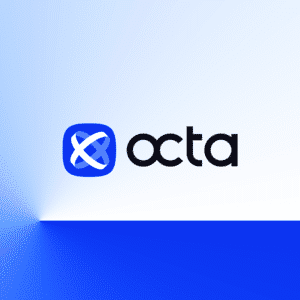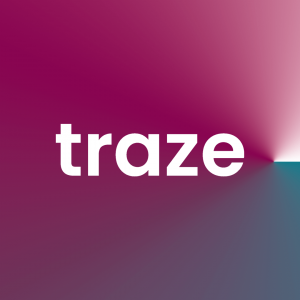
Are you a beginner interested in trading but unsure where to start? Don’t worry, we’ve got you covered! In this article, we will explore the best trading options for beginners, beginner-friendly trading platforms, and how to learn trading as a beginner. By the end, you’ll have a clear understanding of which trading method is ideal for you and the resources available to kickstart your trading journey.
For beginners, stock or forex trading with accessible resources and educational support is ideal. Start with well-regulated platforms, consider your risk tolerance, and opt for markets that align with your interests and learning curve.
The Different Types of Trading for Beginners
Before diving into the best trading options for beginners, it’s essential to understand the different types of trading available. Here are some popular choices:
- Stock Trading: Stocks are beginner-friendly and allow you to test the waters before exploring more advanced techniques.
- Forex Trading: Forex trading involves exchanging one currency for another and is the largest global market.
- Swing Trading: This method involves holding an investment for more than a day but less than a couple of months, making it suitable for beginners.
- Index Trading: Allows beginners to speculate on the price movements of a group of underlying assets.
- Commodities Trading: Involves speculating on the market price of natural resources like gold, oil, and agricultural products.
Which Trading is Best for Beginners
Embarking on the journey of trading as a beginner can be both exciting and overwhelming. To help you navigate the diverse world of trading, let’s delve into various trading styles, each with its own set of advantages and disadvantages. Let’s explore the options and find out which one aligns best with your interests and goals.
Stock Trading: Mastering the Basics
Stock trading is a fundamental entry point for beginners, involving the buying and selling of shares in individual companies listed on a stock exchange. This trading style is relatively straightforward, making it accessible for those new to the market. However, it’s crucial to be aware of market volatility and the potential for losses if the value of your stocks declines. For those seeking a guided introduction, Trade With the Pros offers a dedicated course in Stock Trading, allowing beginners to learn the ins and outs of navigating the stock market directly from seasoned experts.
Options Trading: Navigating the Complexities
Options trading takes a step further by involving the buying and selling of contracts that provide the right (but not the obligation) to buy or sell a security at a future price. While more complex than stock trading, options trading offers opportunities for hedging against losses in other investments. Beginners should take the time to grasp the mechanics of options before venturing into this realm. Gaining a solid understanding can unlock the potential for profit and strategic risk management.
Forex Trading: Unveiling the Currency Markets
Forex trading, involving the buying and selling of currencies on the foreign exchange market, is an option that can be particularly appealing to beginners. The abundance of online resources makes it easier to learn about the market and its workings. However, caution is advised due to the high level of risk and market volatility associated with forex trading. Beginners should invest time in comprehensive education before engaging in this dynamic and potentially rewarding market.
Futures Trading: Customizing Your Approach
Futures trading provides beginners with a level of flexibility and customization not always found in other forms of trading. Traders can choose the type of asset they want to trade, set the expiration date of the contract, and determine the size of their position. The use of leverage in futures trading allows for the potential to increase profits, but it also heightens the risk of losses. This style of trading can be an excellent way for beginners to learn about financial markets while actively managing risk and exploring profit opportunities.
Swing Trading: Ideal for Beginners
For beginners, swing trading emerges as an ideal option due to its simplicity and minimal time commitment. This form of trading requires as little as 15 minutes a day, making it manageable even for those with full-time jobs. The focus is on scanning the market for signals and placing orders for the next market open. The advantages include time efficiency, profit opportunities, and less psychological demand compared to day trading. However, overnight risk is a consideration, as holding positions for several days exposes traders to potential market gaps beyond their stop-loss levels.
Position Trading: Slow and Steady Wins the Race
Position trading, a slower form than swing trading, involves holding positions for more extended periods, ranging from weeks to several months or even years. This approach aims to capture long-term trends in the market, primarily using trend-following strategies. Similar to swing trading, position trading requires minimal time, making it feasible for those with full-time jobs. The advantage lies in low transaction costs, but the trade-off is often a lower win rate, making consistent execution challenging. Some argue that position traders might miss shorter-term opportunities as their capital remains tied up in long-term positions.
Algorithmic Trading: Letting Computers Work for You
Algorithmic trading is a sophisticated form where trades are executed by computer-set rules. This method allows traders to automate their strategies, providing the advantage of trading many strategies simultaneously. The result is superior risk handling and diversification, translating into higher profit potential at lower risk. While not the most beginner-friendly option, algorithmic trading offers the benefit of freeing up time from manual order placements. The focus can then shift to developing and refining profitable trading systems. This approach is less psychologically demanding, offering a strategic advantage for those who prefer a hands-off approach.
Choosing the right trading style is a personal journey influenced by individual preferences and goals. For beginners, starting with swing trading is recommended, as it strikes an ideal balance of simplicity, time efficiency, and profit potential. As you explore the various trading styles, remember to educate yourself thoroughly, seek expert guidance, and continually refine your strategies. The trading world is dynamic, and your journey as a trader is a continuous learning process.
How to Learn Trading as a Beginner
Learning trading as a beginner can be an exciting journey. Here are some steps you can take to get started:
- Self-Study: Study educational materials and resources available online to grasp the fundamentals of trading.
- Practice on a Demo Account: Many trading platforms offer free demo accounts where you can practice trading without risking real money.
- Take Trading Courses: Enroll in beginner-friendly trading courses to gain in-depth knowledge and practical skills.
- Manage Risk: Start with a small capital and focus on risk management strategies to protect your investments.
- Use Educational Resources: Take advantage of educational resources offered by trading platforms, such as webinars, videos, and tutorials.
Key Takeaways
- Stock trading is a beginner-friendly option that allows you to test the waters before exploring more advanced techniques.
- Forex trading involves exchanging one currency for another and is the largest global market.
- Swing trading is a suitable option for beginners, involving holding investments for more than a day but less than a couple of months.
- Index trading allows beginners to speculate on the price movements of a group of underlying assets.
- Commodities trading involves speculating on the market price of natural resources like gold, oil, and agricultural products.
- Self-study, practice on demo accounts, take trading courses, and use educational resources to learn trading as a beginner effectively.
- Start with a small capital and focus on managing risk to protect your investments.
The Different Types of Trading for Beginners
When it comes to trading for beginners, there are several different options to consider. Each type of trading offers its own unique advantages and challenges. Let’s take a closer look at some of the most popular types of trading for beginners:
1. Swing Trading
Swing trading is a great option for beginners as it allows them to hold investments for a short to medium-term period, typically ranging from a few days to a couple of months. This type of trading offers the opportunity to take advantage of short-term price fluctuations and capture profits.
2. Stock Trading
Stock trading is one of the most beginner-friendly types of trading. It involves buying and selling shares of individual companies. Stock trading allows beginners to dip their toes into the market and learn the basics before exploring more advanced strategies like options trading, short selling, and margin trading.
3. Forex Trading
Forex trading involves the exchange of one currency for another and is the largest global market. It offers beginners the opportunity to trade currencies and speculate on their price movements. Forex trading is known for its high liquidity and potential for profit, but it also comes with increased risk.
4. Index Trading
For beginners looking to speculate on the price movements of a group of underlying assets, index trading is a popular choice. This type of trading involves trading financial instruments that track the performance of an index, such as the S&P 500. Index trading allows beginners to gain exposure to a diversified portfolio of assets.
5. Commodities Trading
Commodities trading involves speculating on the market price of natural resources such as gold, oil, and agricultural products. Beginners can trade commodities through various derivative instruments, including futures contracts and exchange-traded funds (ETFs). Commodities trading offers the opportunity to diversify a trading portfolio and potentially profit from global economic trends.
As a beginner, it’s important to carefully consider each type of trading and choose the one that aligns with your financial goals, risk tolerance, and trading style. By starting with a type of trading that suits your needs, you can embark on your trading journey with confidence and set yourself up for success.
| Type of Trading | Description |
|---|---|
| Swing Trading | A short to medium-term trading strategy that aims to capture profits from short-term price fluctuations. |
| Stock Trading | Buying and selling shares of individual companies to profit from price movements. |
| Forex Trading | Exchanging one currency for another to speculate on currency price movements. |
| Index Trading | Trading financial instruments that track the performance of an index, such as the S&P 500. |
| Commodities Trading | Speculating on the market price of natural resources such as gold, oil, and agricultural products. |
How to Learn Trading as a Beginner
When it comes to learning trading as a beginner, there are several steps you can take to equip yourself with the necessary knowledge and skills. One of the first things you can do is to educate yourself through various resources that are available online and offline. Many trading platforms offer educational materials such as courses, webinars, and videos that can help beginners understand the basics of trading and develop their trading strategies.
Another way to learn trading is to practice on a free demo account. This allows beginners to experience real market conditions without risking their own money. By using a demo account, beginners can test different trading strategies and learn how to manage their trades effectively. It’s important to remember that practice makes perfect, and using a demo account can be a valuable tool in developing trading skills.
Additionally, beginners can consider enrolling in trading courses. These courses are designed to provide comprehensive training and guidance on various trading topics, including technical analysis, risk management, and trading psychology. By taking a structured course, beginners can gain a deeper understanding of trading concepts and learn from experienced professionals in the industry.
Overall, learning trading as a beginner requires a combination of self-education, practice, and utilizing educational resources. By investing time in learning and practicing trading strategies, beginners can develop the skills necessary to navigate the financial markets and make informed investment decisions.
Conclusion
In conclusion, when it comes to trading for beginners, it is crucial to choose the right trading platform. Platforms like Fidelity, Merrill Edge, and E*TRADE provide user-friendly interfaces, educational resources, and valuable stock market research. These platforms offer a solid foundation for beginners to start their trading journey.
Furthermore, it is important for beginners to explore different types of trading. Swing trading allows beginners to hold investments for a short period, while stocks provide a beginner-friendly option to test the waters. Forex trading offers the opportunity to exchange currencies, and index trading allows speculation on the price movements of a group of assets. Commodities trading, on the other hand, involves speculating on the market price of natural resources.
Learning trading as a beginner requires a combination of self-study, practical experience, and educational resources. Beginners can utilize the educational materials, courses, and webinars offered by trading platforms to enhance their knowledge. Additionally, practicing on a free demo account enables beginners to hone their skills before venturing into real trading.
Ultimately, trading can be a rewarding venture for beginners, but it is essential to start with a small capital and prioritize risk management. By carefully selecting the right trading platform, exploring different trading types, and utilizing educational resources, beginners can lay a solid foundation for their trading journey and increase their chances of success in the market.
FAQ
What are the best trading platforms for beginners?
According to StockBrokers.com, some of the top trading platforms for beginners are Fidelity, Merrill Edge, and E*TRADE. These platforms offer user-friendly interfaces, educational materials, and quality stock market research.
What should beginners look for in a trading platform?
Beginners should prioritize brokers that provide educational resources such as webinars, videos, progress tracking, and interactive quizzes. Easy-to-use interfaces and access to quality stock market research are also important.
What are the benefits of swing trading for beginners?
Swing trading, which involves holding an investment for more than one day and less than a couple of months, can be a good option for beginners. It allows them to get a feel for the market without diving into more complex trading options like options, short selling, and margin trading.
What are the different types of trading for beginners?
Beginners can explore various trading options such as stocks, forex trading (exchanging one currency for another), index trading (speculating on the price movements of a group of underlying assets), and commodities trading (speculating on the market price of natural resources like gold, oil, and agricultural products).
How can beginners learn to trade?
Beginners can teach themselves how to trade by studying educational materials, practicing on a free demo account, and developing a consistent investment philosophy. Many trading platforms offer educational resources like courses, webinars, and videos. Additionally, resources like IG Academy, BabyPips, and AvaTrade’s learning center can provide valuable information.
What are some tips for beginners starting in trading?
Beginners should start with a small amount of capital and focus on managing risk. It’s important to compare pricing and fees when choosing a trading platform. Practice and honing skills on a free demo account before trading with real money is highly recommended.

















